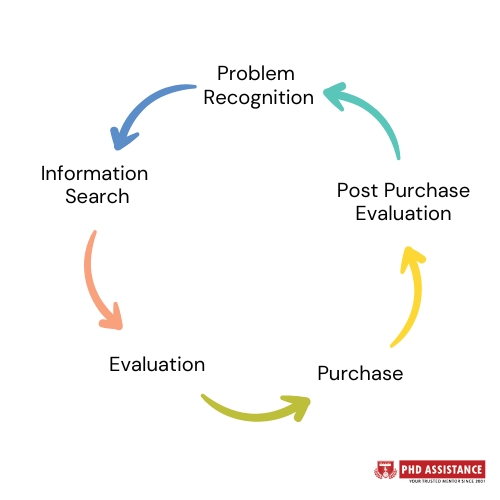Key Factors Influencing Customer Purchasing Behaviour
Introduction
All of us have been in the situation where we enter a store and immediately notice something we must have. Retailers invest enormous sums of money each year in an effort to give their customers that sense. This blog will explore the many sorts of purchasers as well as the factors that affect and shape consumer purchasing behavior (Ali & Anwar, 2021).
Consumer purchasing behavior describes the steps consumers take before purchasing a good or service, both online and offline. Search engine research, participation in social media discussions, and a range of other activities could be part of this process. Understanding this process is beneficial for organizations because it enables them to better match their marketing attempts to those that have previously been successful in persuading customers to make purchases. This kind of behavior is influenced by many things.
What are the key factors influencing customer purchasing behaviour?
The process of consumer purchase intention is influenced by a number of elements, including cultural, social, personal, and psychological considerations. If viewed independently, they might not encourage a purchase. The more components that make up a brand, the more likely it is that a consumer would identify with it and buy from it (Xu et al., 2020). Below are the 4 common factors involved:
Cultural Factors – People’s nationalities do not always determine their culture. Additionally, it might be characterized by their affiliations, their religious convictions, or even their geographic location.
Social Factors – elements in a person’s environment that affect how they view products.
Personal Factors – Age, marital position, financial situation, as well as one’s own personal convictions, morality, and values, are a few examples.
Psychological Factors – The way a person is feeling when they are presented with a product will frequently affect how they feel about both the product and the brand as a whole.
What are the four types of purchasers?
The analytical, the affable, the driven, and the expressive customer are the four main categories of purchasers. Based on what drives each individual to purchase, they are different.
- The Analytical purchaser – This logical and knowledgeable consumer would consider all the information on rival brands and items before making a selection.
- The Amiable purchaser – This purchaser is friendly and genuinely wants to make everyone happy. The impression of a win/lose conclusion causes them to frequently become frozen when faced with important decisions (Bastos, 2020).
- The Driver purchaser – Most significant to drivers is how other people see them and whether they are being followed. Drivers are the trendsetters in the industry, and they are more focused in how they appear than the relationships that are built via transactions.
- The Expressive purchaser – For the Expressive Buyer, relationships are essential. They are unable to tolerate being ignored or feeling alone throughout a transaction. They prefer to feel like your most valuable asset, nevertheless.
It’s challenging to categorize anything as complex as consumer purchasing behavior into four orderly groups. The majority of people will discover that they exhibit a mix of these kinds of consumer purchasing behavior. It’s critical to comprehend the steps involved in the customer purchasing process in order to better comprehend this behavior.
Consumer Purchasing Process has Five Stages
Consumer purchases go through five stages: identifying a problem, obtaining data, identifying solutions, making a purchase, and reviewing the transaction.
Find a Problem – In this stage, the customer becomes aware of problems they want to solve for the first time. It might be anything from needing a new outfit for a planned occasion to having a leaky pipe in their home repaired.
Gather Information – Consumers will then want to investigate the potential causes of their issue and potential solutions. They might use the internet to look for advice or more details about what might be the root of their issue. For our hypothetical scenarios, the shopper might look at the best materials to wear to an outdoor wedding when choosing a new clothing. In order to determine if they can solve the issue on their own, the individual who has a leaking pipe may research what causes leaky pipes (L z roiu et al., 2020).
Find Solutions – The consumer will seek out further specifics on how to address their issue once they have gathered all the necessary facts. To aid in their decision-making, they will start contrasting brands and reading customer reviews. If someone is shopping, they could search for stores that offer the most elegant formal clothes at the best costs. If a pipe is leaking, the owner may search online reviews for the top local plumbers.
Make a Purchase – The purchaser will choose and purchase a solution at this point. That would include investing in new clothing and hiring a plumber for our instances (Hanaysha et al., 2021).
Review the Purchase – On business website, some customers might leave reviews, while others might not. In each scenario, the customer will assess the good or service they got and decide if they would use it again or recommend the chosen company to others.

Figure 1: Generic Consumer Purchasing Process
How do you determine the research methodology in customer purchasing behavior? PhD assistance dissertation writing assistance is always unbeatable in terms of quick dissertation completion, thoroughly researched content, uniqueness, perfect formatting, and precise referencing. To know more about other research writing service, get in touch with our PhD assitance experts.
 Next Post
Next Post
